Energetic Transition Process Begins on Croatian Islands
The Clean Energy Secretariat on EU islands held an energy transition workshop attended by representatives from the Croatian islands of Brač, Cres, Hvar, Korčula and Lošinj last week.
As Morski writes on the 18th of March, 2019, Croatian islands officially launched an energetic transition up and down the coast. Back at the beginning of February this year, the Secretariat's initiative for clean energy for the EU's islands, which was initiated by the Croatian MEP Tonino Picula, announced a list of 26 European island communities that will receive expert and advisory support for the energy transition strategy in the coming period, writes Pokret otoka (Island movement).
Among the 26 selected islands are four Croatian island communities: The Cres-Lošinj archipelago and Brač, Hvar and Korčula. The two-day workshop, organised with the cooperation of the cities of Cres and Mali Lošinj, the OTRA Island Development Agency, LAG Kvarner Islands and Pokret otoka (Island movement) as local partners, gathered forty representatives of selected islands that, with expert assistance, will set the first foundations of energy transition plans. The gathering took place last weekend and this is the first of a total of ten workshops which will be carried out by the Secretariat for the EU islands in the forthcoming period.
Representatives of transition teams from all five islands participated in the workshop in Mali Lošinj, which will work on strategy development in cooperation with partners and experts in the coming period. The goal of the two-day workshop, besides transferring knowledge and experiences from different areas, has also been gathering, networking and strengthening the island's stakeholders for further cooperation in the energy transition process.
The Cres-Lošinj archipelago, set as one of the six European pilot projects, should have its energy transition plan should be ready by the end of summer 2019. The remaining twenty islands, including Brač, Hvar and Korčula, will have their plans in place by 2020. Despite the abundance of renewable energy sources, many islands currently depend on fossil fuels and energy imports from the mainland. The transition to clean energy can help the islands not only become more self-reliant and prosperous, but also open up new opportunities for employment in their communities and encourage further direct development of the islands.
The other islands that will be pilot projects in the initiative are the Irish Islands, Sifnos in Greece, Salina in Italy, La Palma in Spain and Culatra in Portugal. Twenty other islands will follow their development and enjoy the suppor of experts in the same direction. An expert team of the Secretariat for the islands will produce guides to initiate energy transition, encourage community involvement and discuss project financing in the forthcoming period.
Croatian islanders will have the opportunity to cooperate with each other, create a network of good practices, educate themselves and and participate in various events. It is important to emphasise the fact that the whole initiative is based on the "bottom up" approach, and the primary principle of transition success is based on the involvement of all local community stakeholders, which include the representatives of local self-government units, entrepreneurs, educational institutions, and of course civic initiatives.
Make sure to follow our dedicated lifestyle page for more information on Croatian islands and much, much more.
Click here for the original article by Ana Marija Jakas for Pokret otoka (Island movement)
EU Funds for Croatia's Island Fishermen and Fish Processors
Through the Maritime and Fisheries Operational Program, the amount of 234.9 million kuna was agreed for 635 users for their projects on seventeen islands in Croatia, while the amount of 176.7 million kuna was paid to as many as 570 beneficiaries.
As Morski writes on the 8th of March, 2019, the largest amount of beneficiaries of contracted and paid funds are on the island of Ugljan, where as much as 27 percent of the total contracted funds for beneficiaries on the islands have been contracted. Given the large number of fishermen on the island of Ugljan, particularly in Kali, the measures that have been taken relate to (among other things) health and safety and energy efficiency on fishing vessels, as well as an additional measure aimed at improving the conditions for product placement on the market, thus achieving a higher price for the products themselves.
''Our fishermen, fish farmers and [fish] processors are well acquainted with the opportunities the Operational Program for Maritime and Fisheries provides, and that has also been confirmed by the growth of the available funds [for this sector] over the last two years. Since the beginning of the implementation of the Maritime and Fisheries Operational Program, a total of 42 tenders have been issued to date, of which 34 have been during the mandate of this government. So far, 47.27 percent of the allocation, or 1.2 billion kuna, has been contracted, and almost 600 million kuna has been paid,'' said the minister of agriculture, Tomislav Tolušić.
Investment on the island Brač is set to occur immediately after the investment on Ugljan. On the other fifteen islands, most of the investments have been directed towards fishing and measures related to it, examples of that are Hvar, Dugi Otok and Cres.
There is also investment occurring in the field of energy-efficient heating and cooling systems in construction facilities for fish processing, as opposed to outdated ''classic'' systems (fossil fuel systems). Money will also be pumped into improving business processes by acquiring new IT equipment and more modern business management software.
Within the Croatian Maritime Operational Program for the Programming Period 2014-2020, 348.7 million euro (252.6 million euro from the EU budget and 96.1 million euro from the budget of the Republic of Croatia) have been made available.
These funds are extremely important to Croatia's fishing sector and as such meets their very specific needs over the aforementioned time period. Within the operational program, in cooperation with all interested stakeholders from scientific institutions, local and regional self-government units, state institutions and entities from the fisheries sector, 36 different measures were covered for the entire sector, from sea and freshwater catches and farming, to the processing and eventual marketing of fish products, to producer organisations and FLAGs.
Make sure to stay up to date on fishing in Croatia and much, much more by following our dedicated business page.
Active Tourism on Hvar: Mountain Madness Returns for Second Edition
March 4, 2019 - Hvar's growing reputation as an active tourism destination gets another boost with the return of Mountain Madness Hvar for the second time.
Fifteen years ago, Hvar was hardly known for its adventure tourism. With the notable exception of the Faros Marathon 16km open sea swim, the most exercise experienced on the island was walking to the beach.
And then something changed.

Back in 2005, the first adventure tourism agency was founded, bringing new tourism possibilities in sailing, kayaking, cycling, hiking and rock climbing. The trend took hold and started to expand, and new events appeared on the Hvar tourism calendar.
The first Hvar Half Marathon took place about ten years ago, and it has proved a popular and very international August fixture ever since. There were more regattas, and more and more tourists took time out from the beach to hike, cycle, climb, sail and kayak.
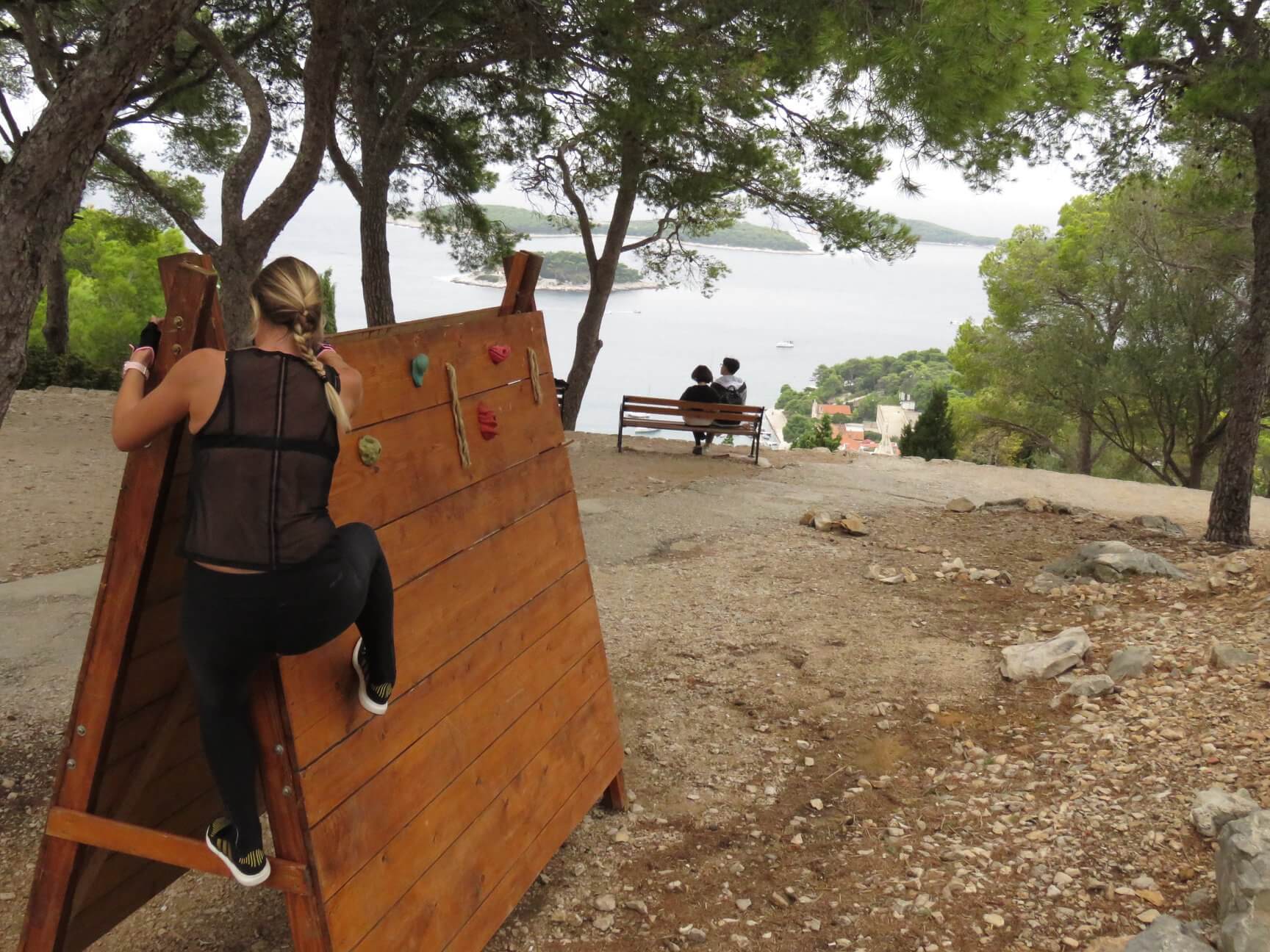
The island's cycling credentials were given a huge boost in December 2017 when one of the world's leading teams, Bahrain Merida and including world champion Vincenzo Nibali, took up residence at Suncani Hvar's Pharos bayhill hotel for their winter training, an event they repeated in 2018.
More international events were added, including the ÖTILLÖ Swimrun Hvar (see video above), which returns for the third edition in April.
And last October, Hvar's adrenaline calendar got another event - Mountain Madness Hvar.

Mountain Madness Hvar is a race designed to test strength, endurance, but also to challenge skills, speed, and ability to overcome various obstacles on a 7km long track, regardless of weather conditions. The race is suitable for participants of all ages and also for dogs!

Mountain Madness originated in Croatia in Ravna Gora, Gorski Kotar, where is has been held for four years, before moving to Zagreb for the first time for the Medvenica Outdoor Festival. The first Mountain Madness Hvar event took place on October 6 last year, the first on a Croatian island.
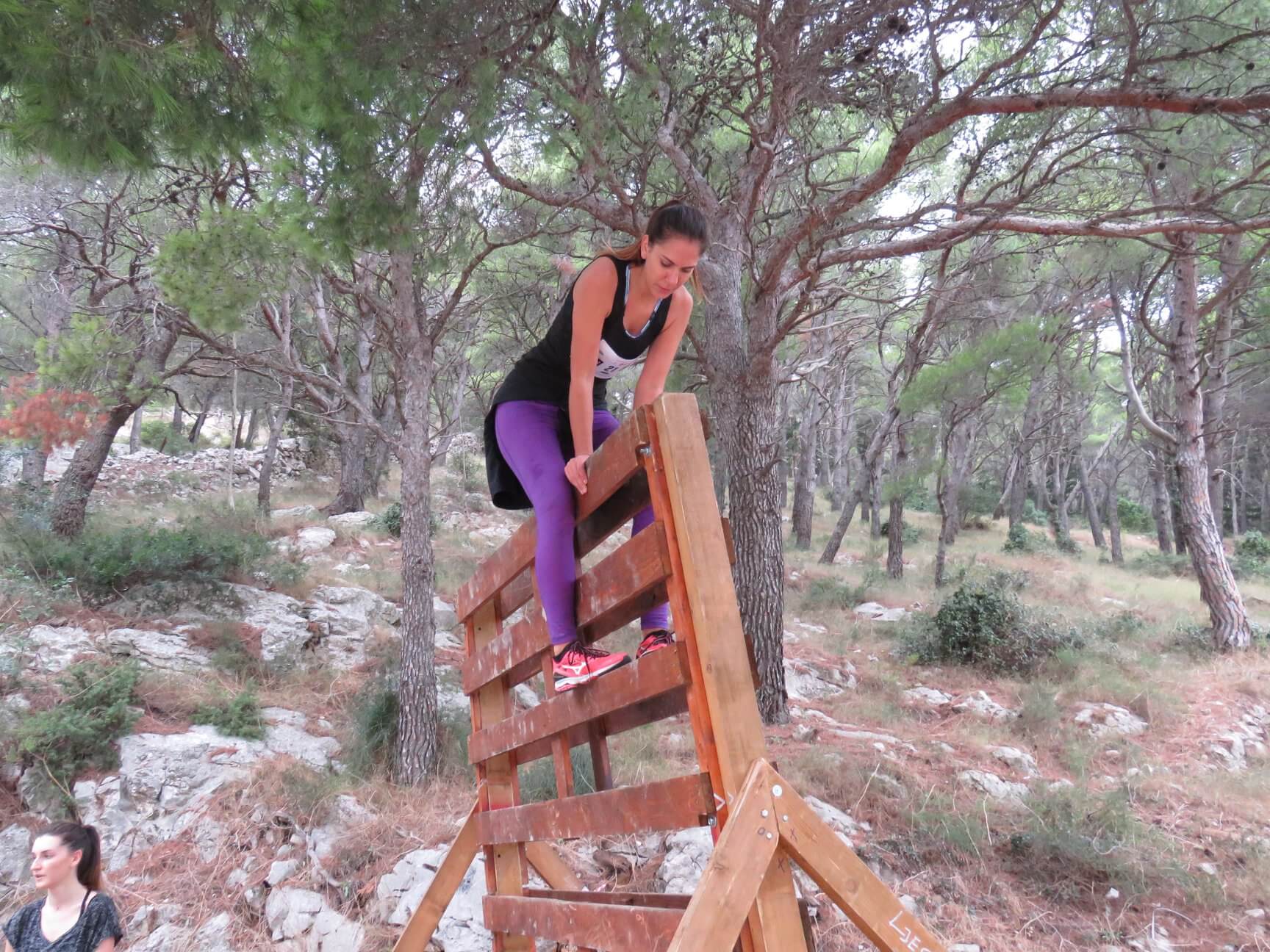
The event was a great success, and organisers Mountain Madness, Suncani Hvar Hotels and Run Croatia could obviously not wait a whole year to repeat it, and this year's event has been announced for April 27.
Want to get an idea of what you might be getting into? Below is a video of Mountain Madness where it began in Croatia - Ravna Gora in Gorski Kotar.
Hvar Allows Carpe Diem to Operate 24 Hours a Day
The Hvar Town Council has changed the regulation on the operating hours of hospitality facilities in the town, which is, in fact, a step towards achieving the goal of cooperation between the local authorities and the owners of the Carpe Diem club, reports Slobodna Dalmacija on February 28, 2019.
This is part of the attempt to introduce some order in the party tourism industry in Hvar. It was openly announced that the same level of co-operation is expected with the well-known "Hula Hula" beach bar, as well as with the ever-increasing number of boats on which party guests "relax." The idea is to demand from these venues to adapt their behaviour so that they would contribute to a better tourist image of the town.
Eight of the ten councillors present (4 HDZ, 2 MOST, 1 SDP and 1 independent) supported the proposal made by Joško Rosso (MOST) that restaurants and bars located at least 500 metres (it used to be 2,000 meters) from the populated part of the town should be allowed to operate 24 hours a day.
Since the change of regulations is actually only relevant to the Carpe Diem Beach Club, located in the bay of Stipanska at the Martinkovac islet in the Pakleni Islands archipelago, since there are no other venues which fulfil this condition, the logical question is why the change was needed.
“Carpe Diem’s operating hours were limited to 2 am in order to strengthen the position of the town administration in terms of the rules of behaviour. Since there is no real alternative in Hvar to this venue, during the summer, after the closure of the coffee shops at Pjaca, there were up to several thousand young people not knowing what to do next. Of course, the police would have more work. On the other hand, with the closure of Stipanska, we would have fewer younger tourists coming, the number of seasonal workers would fall, as well as town-level revenues. We would certainly lose in this game, and that is not the goal, but on the contrary, to responsibly change this form of tourism in our town,” said Rosso.
Citizens complain mostly about the noisy "after beach parties" during the afternoons at the "Carpe Diem" bar at the town's waterfront, as well as about the night-time noise coming from Stipanska and the return of guests to Hvar in the early morning hours. Nada Jeličić (MOST) is known for her attitudes toward party tourism since it was her amendment last year which returned Stipanska under the administration of the town, which allowed it to stay open just until 2 am. But she has now apparently changed her position, so she was asked by reporters what made her change her opinion.
“I must emphasise that finally, in order to get rid of the party destination image, we have set the condition that the summer after-beach parties at Carpe Diem must be discontinued and that the noise from Stipanska must be strictly controlled, so it does not bother citizens and other tourists who do not enjoy this kind of entertainment. The start of the night transportation to Stipanska was moved from 11 pm to 00.30am, and the venue must provide staff on the waterfront in the early morning hours who will welcome the guests, warn them if they are too noisy, and direct them towards their apartments or taxi-vehicles if needed,” said Jeličić.
All this, the councillor added, is in the best interest of the town, but if the agreement is not respected, the current amendments to the regulations will be revoked, and the situation will return to the previous one. The local council adopted the change because the negotiations with Josip Ćurković, one of the co-owners of Carpe Diem, included the independent councillor Katica Vučetić, who is also the president of the Hvar Craftsmen Association, and Jurica Miličić (HDZ), president of the City Council. Rosso stated at the session that "in this case, this is not a takeover of negotiating powers of the mayor, because making decisions is, in any case, the exclusive competence of the Council.”
Even before, Mayor Rikardo Novak did not hide the fact that the town was negotiating with the club co-owners, so last year there were fewer protests about the noise coming from Stipanska. For a while, they even discontinued the after-beach parties and announced they would move them from the town to Stipanska this year.
The “war” against party tourism in Hvar was first announced in mid-2017. At the time, Mayor Novak spoke about people vomiting around the town, urinating on every corner, walking without a shirt, sleeping in public areas, drifting around and not knowing what is happening. Therefore, the town introduced fines for such behaviour: whoever walks in swimwear will pay up to 600 euro, women dressed in the upper part of the swimsuit and men with no shirts will pay up to 500 euro, and people wandering the streets carrying alcohol or lying drunk on the streets up to 700 euro. However, this all remained just a threat since fees are seldom charged.
More news about Hvar can be found in the Lifestyle section.
Translated from Slobodna Dalmacija (reported by Mirko Crnčević).
Hvar Hotel Palace Elisabeth History: From Venetian Palace to 5-Star Heritage
February 27, 2019 - The first 5-star hotel on the island of Hvar is set to open its doors this summer. Hotel Palace Elisabeth, hvar heritage hotel has had quite a history so far.
Walking onto the main square in Hvar Town is always a magical experience. At 4,500m2, it is the largest square in all Dalmatia, and it is also certainly one of the best spots for people watching over a relaxing sun over a leisurely coffee in all Dalmatia. The rich and famous mix with backpackers, as children chase pigeons in this very safe environment.

There is also a sense of history and heritage, of stories hidden in the walls of the majestic buildings which adorn the square. Few first-time visitors realise just how much history and heritage is contained in and around those 4,500m2, for there are some rather signficant things to discover and explore.
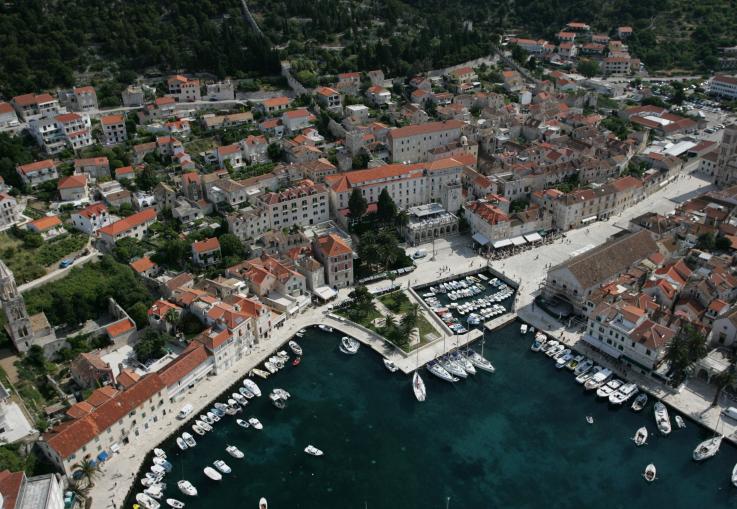
Guarding the entrance to the square on the right from the sea is the historic 13th-century Arsenal. Set to reopen this year after renovation and the discovery of Roman civilisation in its foundations, the Arsenal is also home to a very important building on the first floor - the oldest public theatre in all Europe, which opened in 1612, and which is set to reopen this year.
Around the corner is the birthplace of one Ivan Vucetic, the father of dactyloscopy (that is fingerprinting to me and you), a man whose forensic work made the world a safer place.
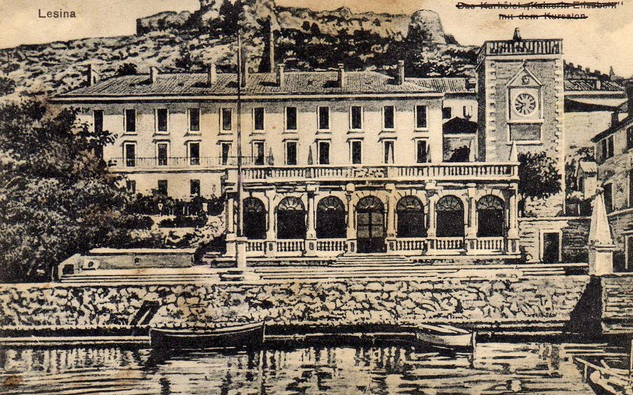
And right across the square and opposite the theatre - the birthplace of organised tourism in all Europe, following the founding of the Hvar Health Society to cater for the convalescing aristocracy from the Austro-Hungarian Empire in 1868. This was an anniversary which was celebrated 150 years later in 2018. Construction of the first hotel to cater to Croatia's first health tourism began in 1881, just one chapter in a building whose history has been as fascinating as the story of Hvar itself, and one which is set to reopen in its latest format, the luxury Hotel Palace Elisabeth, hvar heritage hotel - the first 5-star hotel on the island.
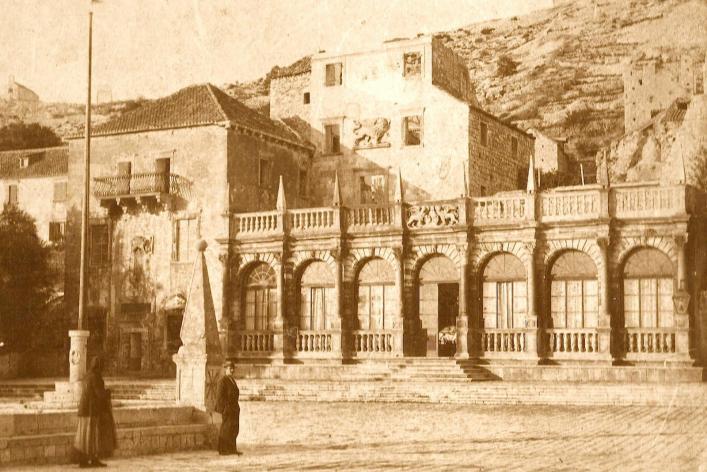
The origins of the hotel date back 800 years to the 13th century and Venetian rule on Hvar, when the Duke's palace was built on top of what is today's City Loggia. There were four towers bordering the palace, with the eastern one converted into a clock tower. The palace was rebuilt in the 16th century after it had burned down.
Following the founding of the Hvar Health Society in 1868, the emerging winter health tourism necessitated construction of a modern health hotel, a significant investment. The palace had fallen into disrepair, and it was demolished in 1881, to be replaced by a hotel designed by famous Viennese architect Bernard Schwarz. It took 17 years to complete, and the Spa Hotel Empress Elisabeth finally opened in 1899. The hotel took its name, as it does once more in 2019, from the Austrian Empress Elisabeth 'Sisi' who generously financed the hotel's construction.
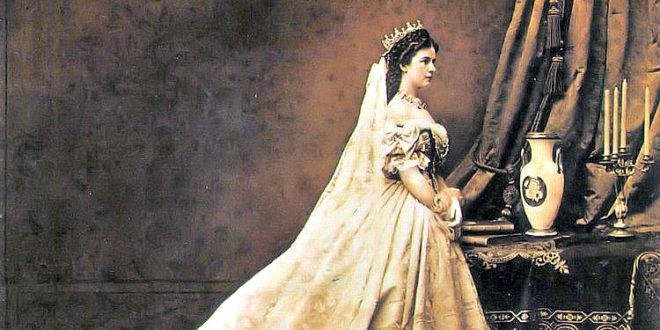
The hotel initially had 26 rooms (35 beds), a dining room, cafe and reading room. The house rules of the hotel, printed in 1905 in Croatian, Italian and German, warned guests of general hotel cleanliness, prohibited smoking in the dining room during lunch, gambling at the hotel, forbid the entry of dogs and other animals, prohibited drying and hanging clothes through windows. The hotel was initially a great success, with the majority of guests coming from Austria, Germany, Czechia and Hungary, and Hvar became known as the 'Austrian Madeira.'
The 20th century was to bring change, however, as well as changes of ownership.
In 1918, Milan Canak bought the hotel of Empress Elisabeth, renaming it the Grand Hotel Palace. Ten years later it changed hands again, when Roko Bradanovic from Vis bought the hotel, and the name changed once again from Grand Hotel Palace to Hotel Palace.
There was further investment and expansion in 1935 due to the efforts of the mayor and manager of Palace Hotel, but just 8 years later, the hotel's use changed completely, as the Partisans turned it into a partisan hospital in 1943 during the war.
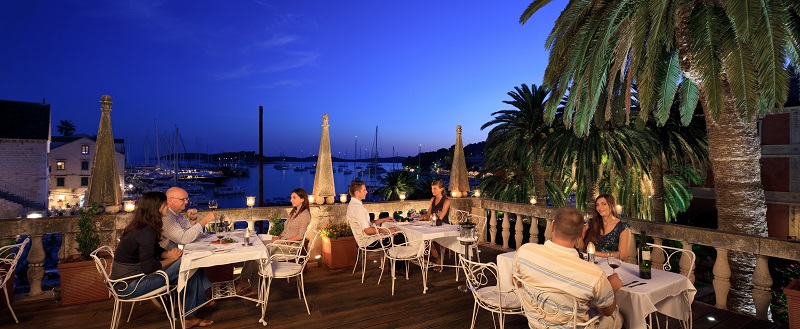
The Palace soon returned to its hotel status, and the next significant date was 1971, when owner Suncani Hvar Hotels renovated the hotel's 73 rooms, as well as adding the pool. And so life continued until the ORCO investment in Suncani Hvar Hotels back in 2006.
Flagship hotels Adriana, Amfora and Riva received the first overhaul, transforming Hvar's hotel offer with a significantly enhanced product to match the quality of the destination. And now in 2019, it is the turn of Hotel Palace to undergo significant investment, with an upgrade and image change from 2-star Hotel Palace to 5-star Hotel Palace Elisabeth, hvar heritage hotel.
The latest - and most luxurious - chapter in the building's 800-year history will open its doors this summer, as will the Arsenal and the oldest public theatre - a wonderful heritage trio for 2019.
You can learn more about the new Hotel Palace Elisabeth on the official hotel website.
UK to Hvar in June: £152pp for 7 Nights in Zavala Including Flights
And they say that Hvar is expensive...
If you are planning on visiting the island this summer from the UK, it pays to book early.
There are surely not many deals better than this one. 7 nights close to the sea in gorgeous Zavala including flight for just £152 per person, based on two sharing.
The flights are from London Stanstead to Zadar with Ryanair, so there will be some additional costs, but the overall package for one of the nicest times to visit (the first week of June) looks pretty good value for money in one of the most popular resorts with great beaches on an island which many say is expensive. But be quick...
Property of the Week: Successful Stone Luxury Rental Business on Hvar
February 26, 2019 - Looking to buy into a property rental business with a lot of love on gorgeous Hvar? You have come to the right place.
If there is a stone house in Dalmatia that has seen more love and laughter than this one, I would like to meet it.
It is one of my favourite real estate stories of all. A British couple looking for a new life abroad came to Croatia way back in 2004. First-time visitors, I remember showing them this property in my former existence as a real estate agent one Monday morning. By lunchtime, they had decided. By Friday they had completed the transaction (a rare case of completely clean papers) and were on the plane back to the UK.
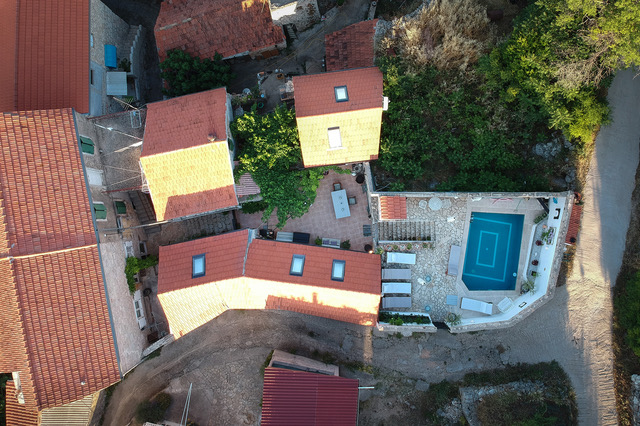
And then started the renovation. And the love.
From a shell of a ruin with three ruined goat sheds emerged one of the warmest welcomes and hospitality experiences on the Adriatic, as the two Brits put a very Scottish trademark on this most Dalmatian of properties. Visitors to the Quaich Experience have been touched by the attention to detail and attempts to go the extra mile over the years, as the owners exceeded the expectations of their numerous guests, many of whom came back year on year.

All good things come to an end, however, and now the Quaich Experience in Vrbanj is for sale, ready for a younger couple (or family) to take over this lovely stone rental business in central Hvar - either as a business or a family home. How better to describe it than through the words of the owners:
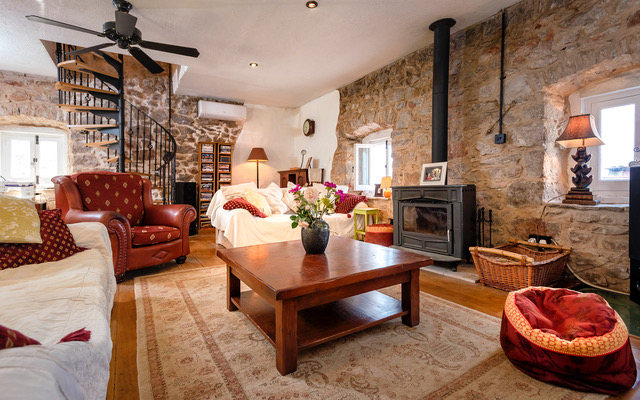
At the foot of the Hvar mountains, between Stari Grad and Jelsa, you will find the village of Vrbanj - population approximately 450. At the foot of the Hvar mountains, between Stari Grad and Jelsa, you will find the village of Vrbanj - population approximately 450.
This is where you will find The Quaich - an old stone house nestling on the edge of this quiet, peaceful village - with magnificent sweeping views of the houses below and across to the island of Brac and the Croatian mainland.
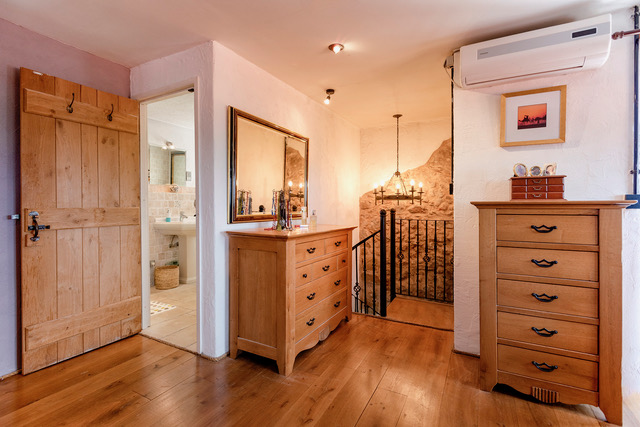
This historical property, which is circa 150 years old, is offered for sale fully restored and renovated to a spectacular standard.
The listing includes the large main house, three separate and self-contained cottage apartments, PLUS a double-tiered courtyard and patio area with swimming pool.
MAIN HOUSE
Generously sized and faithfully restored, the heart of The Quaich is the main house, which consists of three large floors of living space (each measuring 44 sq m.) with one more floor of reinforced attic space for storage.
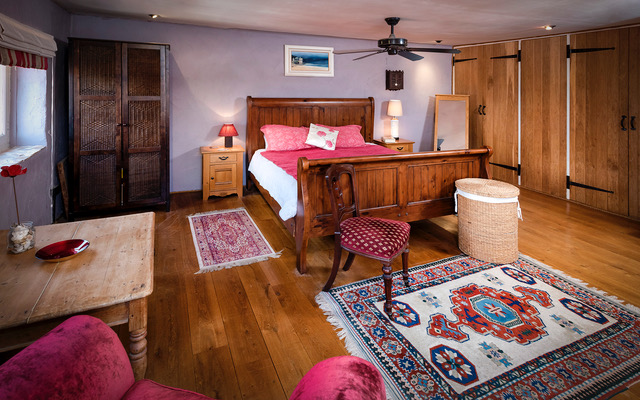
Ground floor:
A large open-plan kitchen, dining area and utility room, with downstairs toilet and washroom.
Wood-burning stove fitted to the fully-functioning chimney and large staircase leading to the first floor.
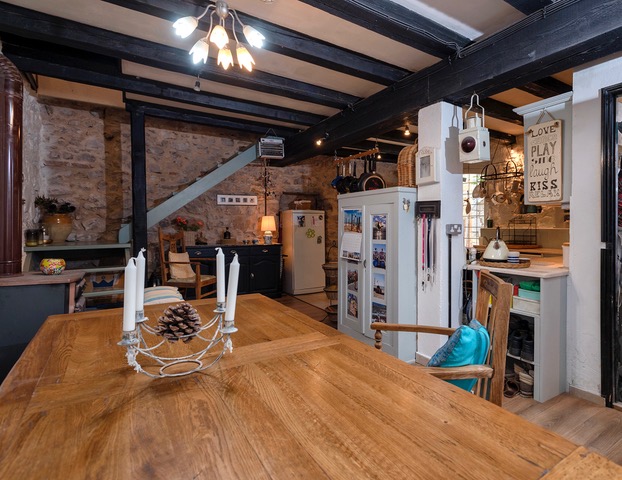
First floor:
An exceptionally spacious, fully air-conditioned open-plan living area.
Real wood floors, spinning ceiling fans, a second wood-burner and feature staircase make this room welcoming, comfortable and beautiful in every season. With five shuttered windows, and a door leading outside and down to the terrace and apartments, it serves as both a conveniently placed hub for friends and visitors, and a blissful retreat from the high temperatures in the hottest months.
A spiral staircase leads to the second floor.
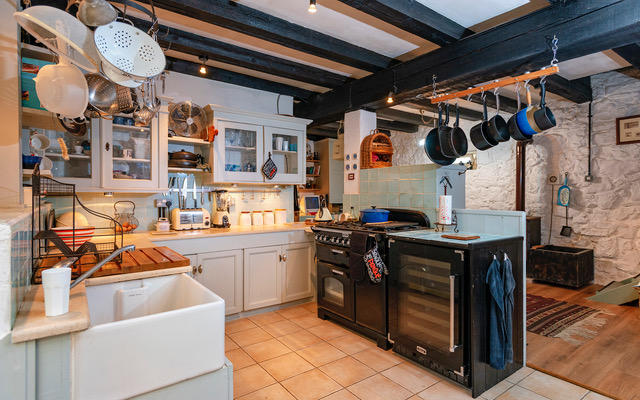
Second floor:
A peaceful and airy space, with large windows, air conditioning and more ceiling fans, the second floor consists of the master bedroom, a large ensuite bathroom and a private outside terrace with panoramic views across the water.
The bedroom boasts room enough for a super king size bed and wall-to-wall fitted oak wardrobes/cupboards, while the ensuite bathroom includes both a jacuzzi-style bath and double shower cubicle.
The private terrace overlooks the Croatian mainland and Brac island, making this a very special place to relax.
Third floor:
Attic space: Large floored and reinforced attic space. Plenty of storage, or possibility of converting the space.
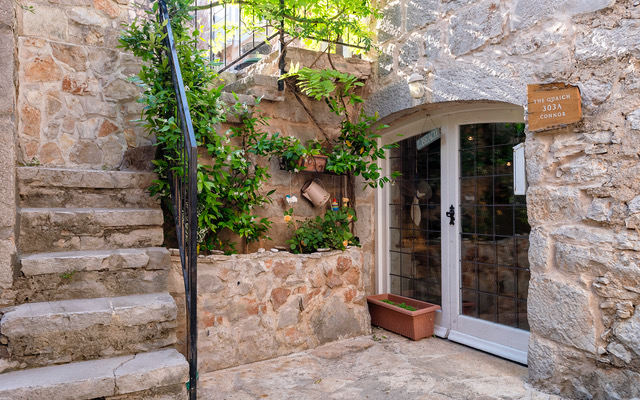
COTTAGES:
The Quaich includes three fully-furnished and equipped cottage apartments with varying levels of capacity (2 - 4 persons). Each cottage is approx. 36 sq m. and they share a large courtyard patio and private swimming pool area. Each of the cottages is decorated to a very high standard and have their own kitchen and bathroom.* The furnishings in the cottages are included in the sale of the property.
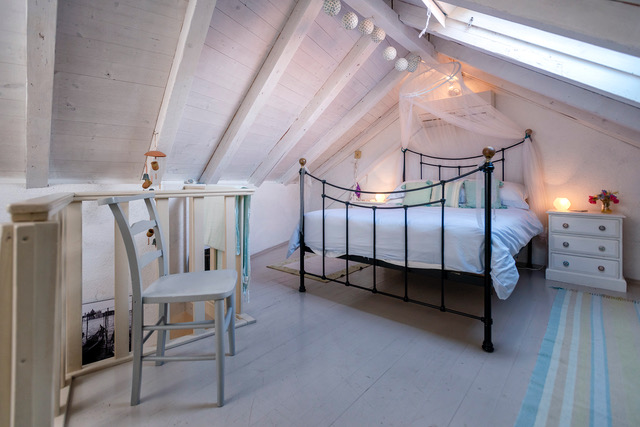
The courtyard is a tranquil year-round sun trap and is planted with many mature flowering plants and hanging grape vines. Steps lead up from here to the pool area, where there are even more plants and more views!
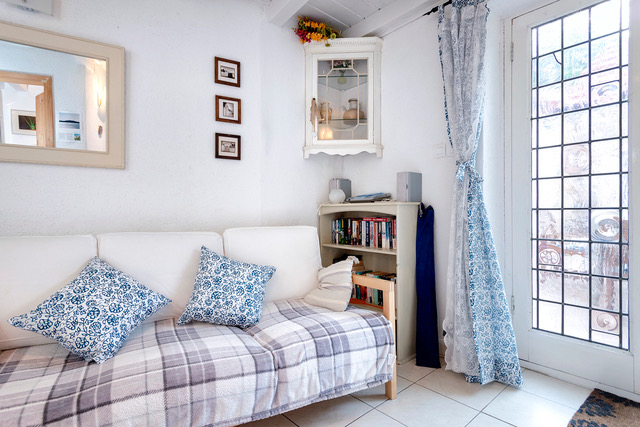
The pool measures 15 sq. m and is a rare treat in Vrbanj, where temperatures can reach 30C on just an average summer day.
There is ample parking in the vicinity. Local amenities include a great place to get pizza and a convenience store just 2-3 mins walk away.
Vrbanj is 5-6 kms from both the towns of Jelsa and Stari Grad and 6 kms from the main port of Stari Grad where there are regular ferries to Split on the mainland. Hvar Town is 22 kms.

*The three cottage apartments are currently designed as self-contained holiday lets, but two of them could easily be joined with the main house to create a luxurious and extremely large three or four bedroom family home.
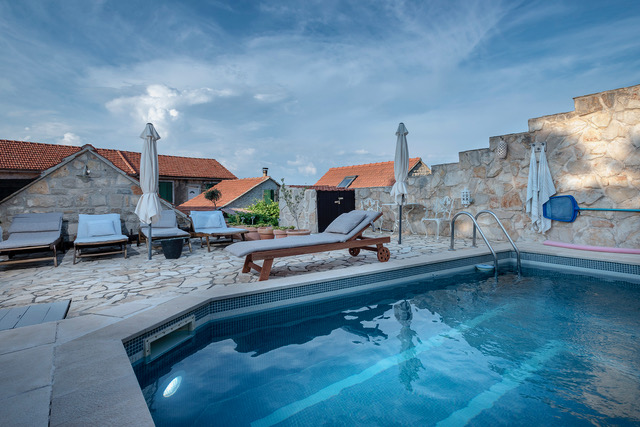
Sales price 495,000 euro. For more information, contact us at This email address is being protected from spambots. You need JavaScript enabled to view it.
Cres, Losinj, Hvar, Brac, Korcula in 1st EU Clean Energy Transition Islands Initiative
Brussels, 18 February 2019 - Today, 26 European islands have officially launched their clean energy transition with the support of the European Commission’s Clean Energy for EU Islands Secretariat.
In the first phase, 6 islands, the Aran Islands (Ireland), the Cres-Lošinj archipelago (Croatia), Sifnos (Greece), Culatra (Portugal), Salina (Italy) and La Palma (Spain) will develop and publish their clean energy transition agendas by summer 2019. The other 20 islands will do so by summer 2020.
These islands are:
• Hvar, Croatia
• New Caledonia, France
• Pantelleria, Italy
• A Illa de Arousa, Spain
• Brač, Croatia
• Crete, Greece
• Azores, Portugal
• Gotland, Sweden
• Korčula, Croatia
• Samos, Greece
• Ibiza, Spain
• Öland, Sweden
• Kökar, Finland
• Cape Clear, Ireland
• Mallorca, Spain
• Orkney, UK
• Marie-Galante, France
• Favignana, Italy
• Menorca, Spain
• Group of Off-Grid Scottish Islands, UK
Dominique Ristori, Director-General for Energy at the European Commission, said:
“The 26 islands selected display a remarkable potential and enthusiasm for developing strong and lasting multi-stakeholder collaborations around the clean energy transition. By embarking on this path, not only will they become more energy self-reliant and prosperous, but also provide inspiring examples for other islands and Europe as a whole. This in turn will help the EU achieve its ambitious climate and energy targets.”
There are more than 2200 inhabited islands in the EU. Despite having an abundance of renewable sources of energy, such as wind, solar and wave energy, many of them currently depend on expensive fossil fuel imports for their energy supply. The clean energy transition can help islands not only become more self-sufficient and prosperous, but also unlock new employment opportunities in their communities.
The objective of the Clean Energy for EU Islands Secretariat is to help as many European islands as possible embark on and advance their clean energy transition in a way that includes the whole island and its stakeholders. Based on experience with successful transition processes, the key to success is to involve all levels of governance of the islands - citizens, municipalities, local businesses, universities and schools – as well as relevant stakeholders from the mainland and bring them on board to actively support and shape their own transition.
Croatian MEP Tonino Picula said: "Islands are becoming more and more visible on the European agenda. The support for 26 islands throughout the Union is an important step in making island communities torchbearers in clean energy transition. This is a first, but an important, step in securing permanent EU assistance to islands. Congratulations to everyone!"
The 26 islands were selected based on their potential for establishing a high-quality transition process with the support of the Secretariat. In order to serve as inspiring examples for as many European islands as possible over the coming years, special attention was paid to including islands covering a broad variety of geographic and contextual conditions.
To learn more about the project and follow progress on its interactive map, click here.
From Melbourne to Kyoto, Hvar Grapes on Tour with British Master of Wine
February 15, 2019 - A British Master of Wine, some grapes from Hvar, and wine-drinking audiences in Japan and Australia.
It is one of my favourite Croatian wine stories, and one which is truly going international.
Croatia, of course, has already made several significant contributions to the international wine story. The original Zinfandel comes from Kastela, just outside Split, the contribution of Miljenko 'Mike' Grgic in California is much talked about since the famous Judgment of Paris in 1976, and the rise of the New Zealand wine story owes a debt to Sir George Fistonish, whose family hailed from Hvar.
And now the grapes of Hvar are popping up in the unlikeliest places - Tokyo, Kyoto, Adelaide, Melbourne and Sydney. And not through a Hvar winemaker, but a British winemaker making the very best of the indigenous grapes of Hvar - grapes from Hvar, hands from London - including one which was named in the top 10 wines in all Croatia in 2017.

It is almost 5 years since I first interviewed Jo Ahearne MW at a Plavac Mali masterclass by Sasa Spiranec at Dalmacija Wine Expo. Things moved quickly after that, with Ahearne deciding to move to the island of Hvar to make her own wine using the indigenous grapes of the island. Her first product for the market was a rosé called Rosina from the local Darnekusa grape.
The first Master of Wine to make wine in Croatia, Ahearne faced the additional challenges of island living, Croatian bureaucracy and running a business in a country where she does not speak the language. But progress has been steady, and the national - and international - reputation of her wines has been growing steadily.

And reaching parts of the globe where no Hvar wines have gone before. New clients in both Australia and Japan have imported the wines from Ahearne Vino, and Jo Ahearne is currently on a promotional tour of her wines. it has led to some rather interesting food pairings:
"Rosina paired with red prawn Vietnamese rice roll and a hint of orange skin grated over it. Genius pairing."
Ahearne in action in Tokyo, at a seminar organised by Japanese importer, Vins d''Olive.

The tastings in Tokyo and Kyoto followed Australian appearances in Adelaide, Melbourne and Sydney. Above, Wild Skins, a cuvee of Bogdanusa, Kuc and Posip, relaxing in the shade in the Barossa Valley.
Grapes from Hvar, Hands from London - a winning combination which is taking the Hvar wine story to a different level.
To follow the latest from Ahearne Vino, follow them on Facebook.
Kayaking in Croatia: Which UNESCO World Heritage Site Will You Choose?
February 12, 2019 - Croatian coastal tourism is developing beyond the sun and beach. Kayaking in Croatia is now big business.
It has been fascinating to watch the trends in Croatian tourism over the last 15 years. The transformation from cities such as Split from the Gateway to the Dalmatian Islands to one of Europe's hottest spots, for example. Or Bol on Brac reinventing itself as a family and adventure tourism destination after being the biggest party on the Adriatic.
And while the sun, sea and beach understandably remain the biggest draw, there has been a noticeable rise in different aspects of tourism. Kayaking in Croatia, for example, was an activity which barely existed 15 years ago, but is now a very popular way to explore for half-a-day for beginners, or multi-day, multi-island trips for the more experienced. So popular has kayaking in Croatia become that Rough Guides named it in their list of 17 unmissable things to do in Croatia.
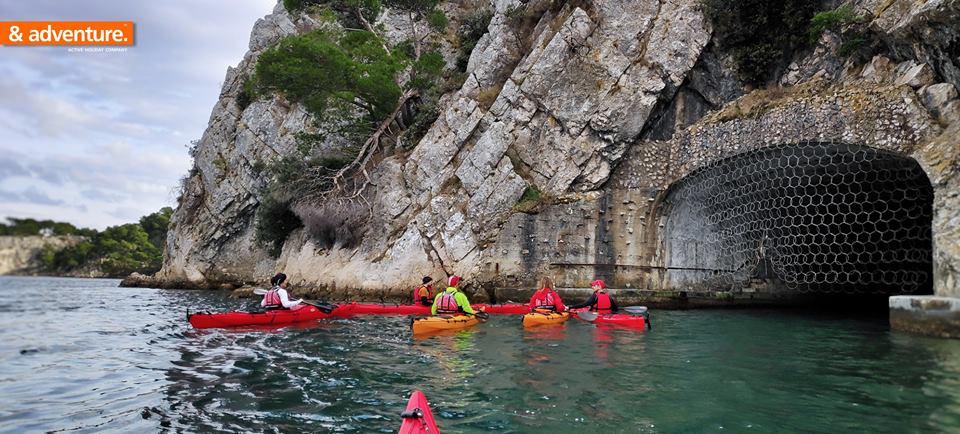
I remember having a beer with one of the pioneers of sea kayaking in Croatia, Vese Huljic of And Adventure, several years ago. As a young enthusiastic local trying to develop kayaking as a tourist activity on her native Hvar, she recalled the bemused looks of locals sitting with their morning coffees watching these young kids carrying kayaks and other equipment to the waterfront. It looked like far too much work when all you had to do was enjoy the sun and think of the beach later.
Huljic and her colleagues persevered, and an exciting new adventure tourism offer was born. Half-day kayaking tours of the Pakleni Islands in front of Hvar Town, sunset kayak tours, and multi-day adventures. With the only requirement for beginners being the ability to swim, here was a new activity which was open to almost everyone. And with expert local guides to take you to the most hidden coves, there was even the chance to discover local secrets off-limits to most tourists.
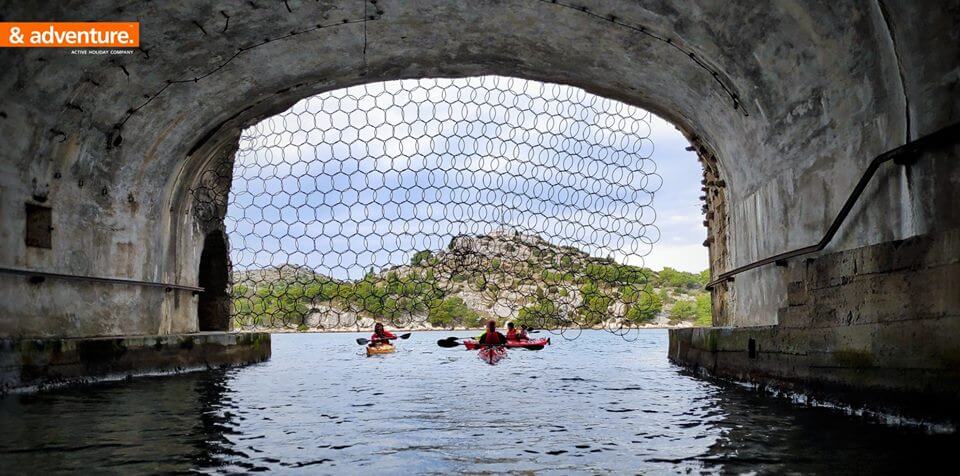
From Hvar to elsewhere in Dalmatia, and kayaking is truly becoming popular. Here is the And Adventure team from their official Facebook page yesterday, exploring the UNESCO World Heritage Site of St. Nicholas Fortress, other military tunnels and the island of Zlarin. Sibenik of course is the only town in Croatia with two UNESCO World Heritage Sites, St James Cathedral being the other, but if you are looking for UNESCO sites to kayak to, you have come to the right place.
The old town of Trogir, perhaps, as seen in the video above, or Diocletian's Palace in Split, where the kayaking has exploded in recent years. Hvar has its own Stari Grad Plain, and further south, kayaking around the majestic walls of Dubrovnik is an experience most tourists miss.
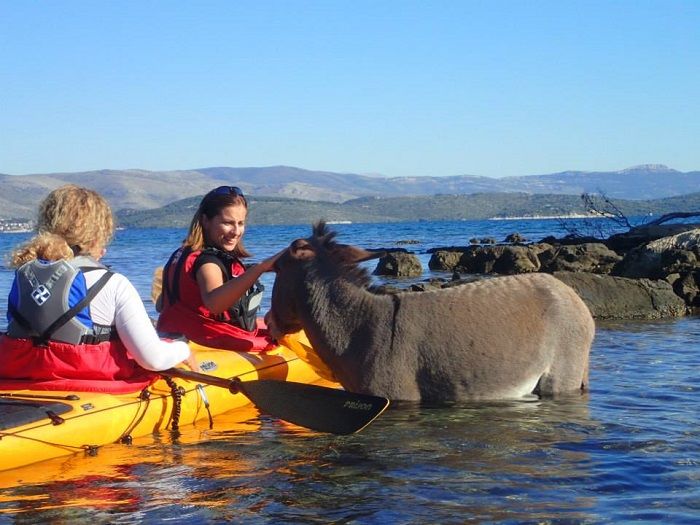
And it is not just UNESCO of course. There are many other unforgettable holiday experiences to be had while kayaking in Croatia. Up close and personal with a donkey, for instance.
To learn more about an aspect of Croatian tourism you had perhaps not yet considered, check out the options with And Adventure.




